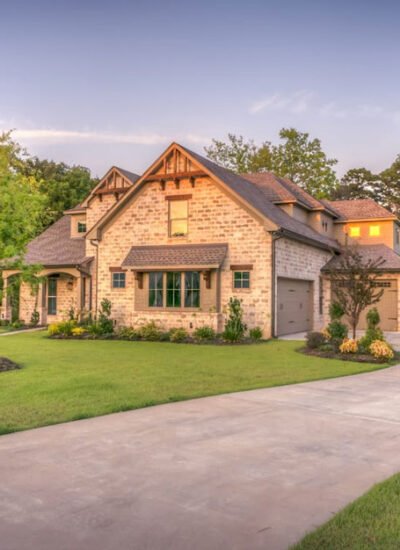Whether used for patios, pathways, fire features, or garden accents, stone brings an organic feel that complements both modern and traditional homes. It holds up against weather, requires minimal upkeep, and adds a polished yet earthy touch to outdoor spaces. Homeowners who want a timeless and practical material often turn to stone for its versatility and ability to tie different elements of a yard together.
In Austin, limestone is a common choice for outdoor projects due to its availability and classic appeal. Many homes in the area often incorporate this local stone into retaining walls, seating areas, and poolside features, giving outdoor spaces a cohesive look that reflects the region’s natural beauty.
Choosing the Right Supplier
Finding the right stone supplier is about more than just picking a material—it’s about selecting high-quality products that fit the space and hold up over time. Professional landscapers can help homeowners choose the best stone for their needs while ensuring proper installation for lasting results. FP Legacy Landscaping specializes in sourcing premium materials and offers expert advice on how different stone types work for specific applications. With a skilled team handling the selection and placement, homeowners get a landscape that looks great and functions well.
One of the biggest advantages of working with them is access to their Austin stone quarry, which offers a wide selection of natural materials. Their Florence rock quarry provides Austin white limestone, gold limestone, nicotine, dark and light cream limestone, white builders, yellow and white flagstone, sienna limestone, and more. Having a variety of options means homeowners can select a stone type that perfectly complements their home’s style and outdoor environment.
Enhancing Patios and Walkways
Stone is an excellent choice for these areas because of its durability and timeless appearance. Unlike poured concrete, which can crack over time, natural stone holds up against heavy foot traffic and changing weather conditions. Its variety of textures and tones allows for customization, whether the goal is a smooth, uniform surface or a more rustic, irregular look.
Layout plays a major role in the finished design of a stone patio or walkway. Flagstone, pavers, and cut limestone can be arranged in different patterns, from clean and geometric to organic and freeform. A well-placed walkway guides visitors through the yard, while a carefully designed patio creates a welcoming area for outdoor gatherings. Matching the stone to existing structures, such as the home’s exterior or retaining walls, helps maintain visual balance and reinforces a cohesive style.
Stone for Outdoor Kitchens and Fire Features
Countertops made from granite or limestone resist heat and wear, while stone-clad islands and grill stations give the space a polished and integrated look. Since outdoor kitchens are exposed to the elements, choosing a material that holds up over time is essential.
Fire features are another way to incorporate stone into an outdoor space while adding warmth and ambiance. A well-built fire pit or fireplace serves as a natural gathering spot for family and guests. Stacked stone gives fire features a rugged, organic look, while cut limestone or brick veneer creates a more structured and elegant style. The warm tones and classic patterns of brick complement various styles, making it a versatile choice for both fire features and exterior walls. Integrating stone veneer for house exterior can further elevate the look, giving the same timeless appeal with added durability. Both brick and stone veneer allow seamless transitions between indoor and outdoor spaces, ensuring a well-rounded and cohesive feel.
Building Retaining Walls and Garden Borders
Natural stone is a strong, attractive choice for these walls, providing both function and style. Whether used to terrace a sloped yard or create raised planting beds, stone retaining walls bring texture and depth to the design. The choice of stone type and color can complement the surrounding elements.
Garden borders are another way to use stone for a polished and cohesive look. Stone edging around flower beds, pathways, or lawn areas creates clean divisions and adds a touch of sophistication. Using the same type of stone for multiple elements—such as patio pavers, garden borders, and retaining walls—helps tie everything together.
Water Features
Water features bring a calming element to outdoor spaces, and incorporating stone into their design helps them look natural rather than out of place. Fountains, waterfalls, and ponds made with natural stone blend seamlessly with the landscape, creating a smooth transition between built and organic elements. Large boulders, flagstone, and river rock are often used to construct cascading waterfalls or pond edges, giving the feature a more natural, flowing appearance. Choosing a stone type that matches other elements in the yard, such as patio materials or retaining walls, keeps the overall design unified.
Beyond aesthetics, stone also plays a practical role in water features. It provides a sturdy foundation, prevents erosion, and helps manage water flow. Larger stone slabs can serve as stepping paths across a pond, while smaller pebbles and gravel can enhance filtration.
Using Stone Accents
Decorative stone elements, such as garden benches, stone planters, and columns, introduce texture and style without overwhelming the space. These details help reinforce the theme of the landscape while providing functional seating or structural support.
Stepping stones, rock sculptures, and stone borders are other subtle ways to incorporate natural materials throughout a yard. These small features add personality to the space while maintaining cohesion with larger stone elements. When designed with care, stone accents make the landscape feel intentional and complete, proving that even the smallest details can enhance the overall outdoor aesthetic.
Maintaining the Longevity of Stone Features
Stone is a long-lasting material, but keeping it in good condition requires occasional maintenance. Sealing stone surfaces helps prevent staining, weather damage, and erosion, particularly for patios, walkways, and outdoor kitchen counters. While natural stone is highly durable, exposure to moisture, dirt, and sun can lead to gradual wear. Regular cleaning, such as sweeping debris and rinsing surfaces, keeps stone looking fresh and prevents the buildup of grime.
Inspecting stone structures periodically helps catch small issues before they turn into major repairs. Loose stones in a walkway, minor cracks in retaining walls, or shifting in patios can often be fixed if addressed early. Professional maintenance services can help with resealing, realigning, and repairing stone elements to keep them strong and visually appealing for years to come. Investing time in upkeep preserves the beauty of outdoor stonework while preventing unnecessary replacement costs.
Stone is one of the most effective materials for creating an outdoor space that feels natural, cohesive, and built to last. Whether used for patios, pathways, fireplaces, or decorative accents, its durability and versatility make it a worthwhile investment. Selecting the right stone, working with experienced professionals, and maintaining the features properly all contribute to an outdoor area that remains stylish and functional for years.






Leave a Reply